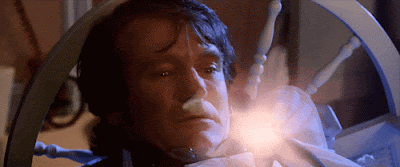I recently had the pleasure of re-watching John McTiernan’s “Predator” (1987) for the umpteenth time with someone who had never seen the movie before. Watching movies with first-timers is a wonderful experience (I highly recommend doing it!) — it's the closest you'll ever get to seeing a beloved movie again for the first time, and it reminded me of a fascinating thought experiment when it comes to the movie’s construction.
I’ll quote from Priscilla Page’s brilliant essay on the movie: “‘Predator’ combines the actioner, the western, the war film, horror, and science fiction. People seeing it for the very first time might’ve thought they were watching something in the vein of ‘Apocalypse Now’, ‘Deer Hunter’, or ‘First Blood’ — until an alien appears and starts ripping out spines and skulls.”
Although the audience catches glimpses of a mysterious thermal point-of-view throughout the first hour, we really aren’t given many clues as to what on earth is stalking our heroes in the jungle. The first time we really get a good look at the alien’s camouflage is at 42 minutes into the movie. The alien finally uncloaks (to the audience) at 53 minutes. At 55 minutes Mac tells Dillon “nothing on this earth could have lived” through a barrage of bullets they just served the hunter.
Of course, in order for the audience to be completely in the dark and fully empathize with our heroes, we would have had to forget the opening title sequence of the movie, which shows a spaceship flying past the camera, launching a smaller craft that is headed toward earth, removing all doubt as to the hunter's origin.
I always wondered how the movie would play WITHOUT that first glimpse of the alien spacecraft. Would it add more suspense and mystery to the movie if we are coldly introduced to our movie without it? I wanted to visualize what the opening titles would look like.
At minimum, I wanted to “simply” remove the spaceship flyby and craft launch. But that meant totally reorganizing the gorgeous music by Alan Silvestri so the new cut could make sense. It also meant completely rebuilding the helicopter landing audio from scratch, using stock sound elements. I also removed the starfield from the three opening title cards. It was a lot of fun, albiet much more work than what I was expecting.
It's a fun to imagine how audiences would have reacted to the movie had it opened this way. As one "Predator" superfan remarked to me: "that spaceship flyby seems like a studio note" added to the screenplay to reduce 'audience confusion'.
Here's a comparison of the original titles and my re-imagined titles:















































